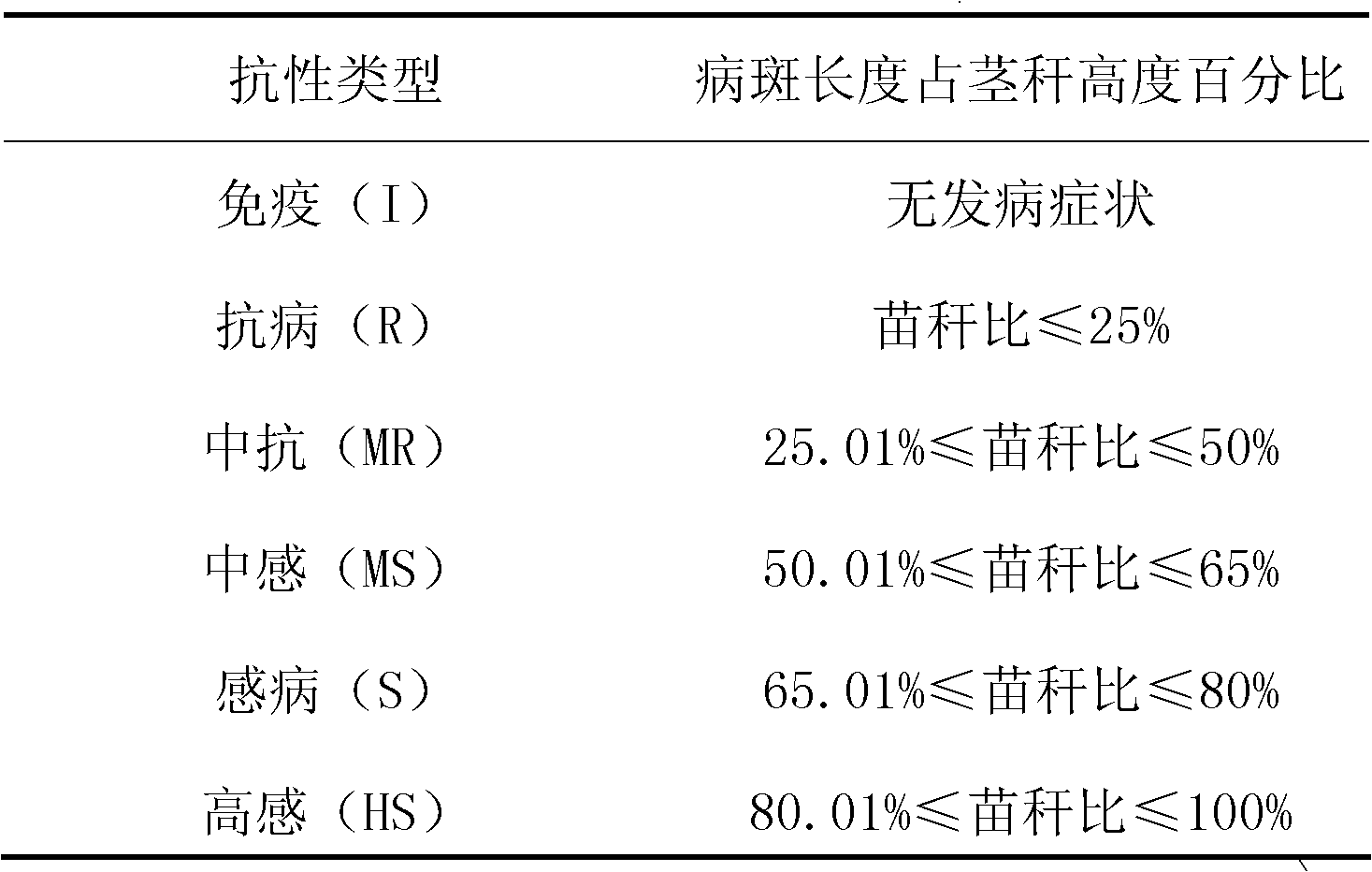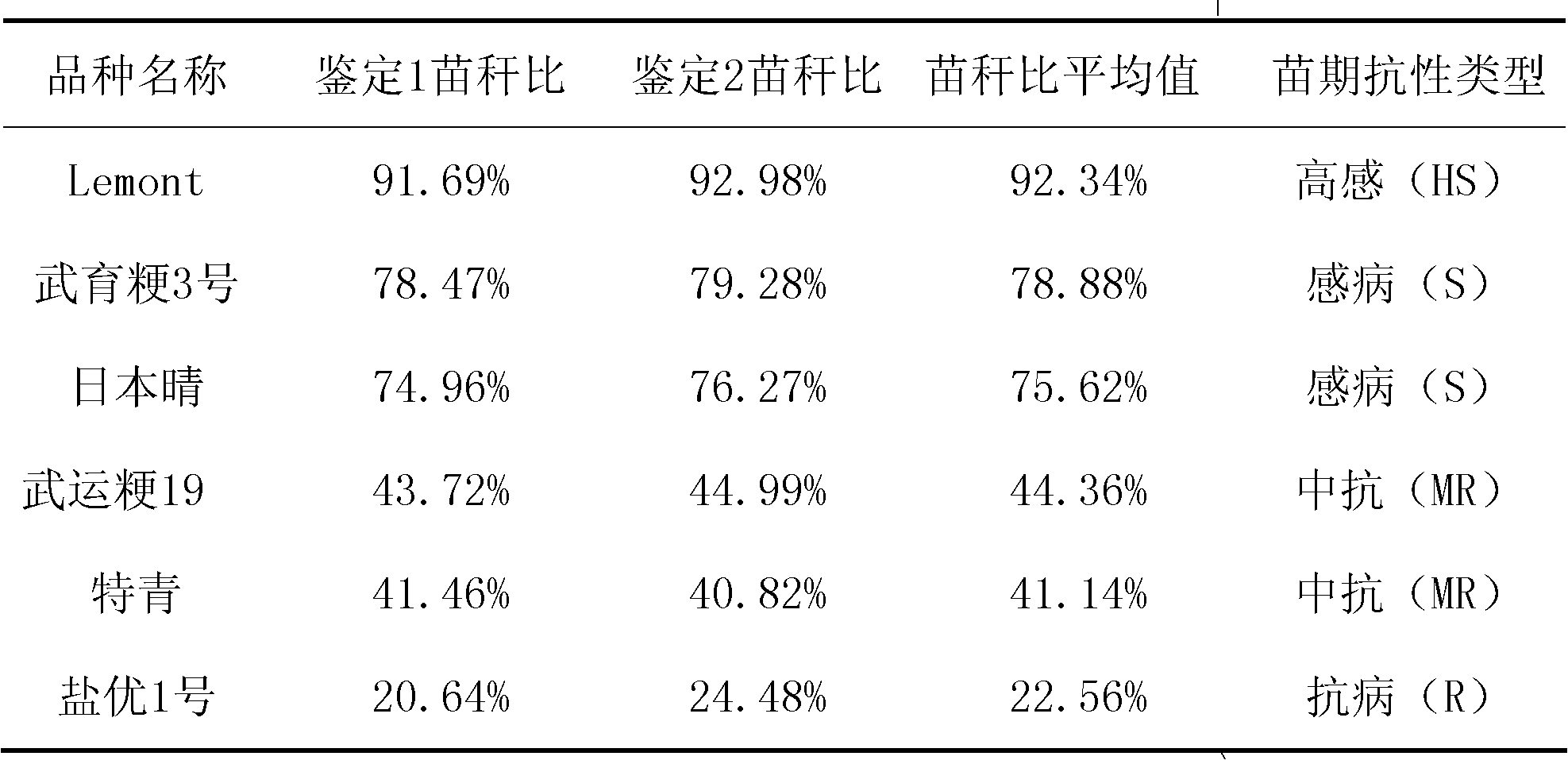Method for quickly identifying resistance to banded sclerotial blight in rice seedling stage
A technology for sheath blight and rice seedlings, applied in the field of rapid identification of rice sheath blight resistance at the seedling stage, can solve the problems of large environmental impact, long time-consuming identification methods, heavy workload, etc., and achieve low labor intensity and short identification period , The effect of fast and effective screening
- Summary
- Abstract
- Description
- Claims
- Application Information
AI Technical Summary
Problems solved by technology
Method used
Image
Examples
Embodiment 1
[0017] The rice sheath blight pathogen taken in this embodiment: the strain of sheath blight (the hyphae fusion group of Rhizoctonia solani is AG1-IA) is derived from the Institute of Plant Protection, Jiangsu Academy of Agricultural Sciences, and is a strong pathogenic strain, numbered for RH-9.
[0018] (1) Strain activation: crush the sclerotia of the strain RH-9 on the ultra-clean workbench, sprinkle it evenly on the surface of the PDA medium, place it in the dark at about 28°C for about 40 hours, and pick the colony with an inoculation loop Border bacteria, placed on the surface of a new PDA medium (sterile operation), cultivated at 25-30°C for about 36 hours, until the surface of the PDA medium is covered with hyphae.
[0019] (2) Preparation of the inoculum: get the mycelium piece with a puncher with a diameter of 1-1.5cm on the new PDA medium of step (1), place it on another PDA medium (by 64cm 2 Place two above-mentioned hyphae pieces on the surface of the PDA medium...
Embodiment 2
[0031] Identified varieties: Lemont, Wuyujing 3, Nipponbare, Wuyunjing 19, Teqing, Yanyou 1. These varieties were identified for resistance to rice sheath blight at the seedling stage, and all varieties were owned by the laboratory or purchased from the market. The identification results are shown in Table 3.
[0032] Table 36 Types of rice variety resistance to sheath blight at seedling stage
[0033]
[0034] All the other implementations are as in Example 1.
Embodiment 3
[0036]Lemont, Wuyujing 3, Nipponbare, Teqing, Wuyunjing 19, and Yanyou 1 were identified for rice sheath blight resistance at the adult plant stage. After aseptic treatment, inoculate and culture on PDB liquid medium in a petri dish for 3 to 5 days, and use it for inoculation when the mycelium is densely covered with the petri dish. At the end of rice tillering, use tweezers to insert a toothpick into the inner side of the three-leaf leaf sheath . The disease grade was investigated 30 days after heading, and the disease grade standards were as follows: the plants of grade 0 were disease-free; On the inverted 4 leaf sheath; at grade 4, the lesion is on the inverted 3 leaf sheath; at grade 5, the lesion height is on the inverted 2 leaf sheath; at grade 6, the lesion height is within half the length of the exposed part of the sword sheath; at grade 7, the entire sword sheath Injured; Lesions appear on the flag leaf leaves at grade 8; Plants die abnormally at grade 9. The resist...
PUM
 Login to View More
Login to View More Abstract
Description
Claims
Application Information
 Login to View More
Login to View More - R&D
- Intellectual Property
- Life Sciences
- Materials
- Tech Scout
- Unparalleled Data Quality
- Higher Quality Content
- 60% Fewer Hallucinations
Browse by: Latest US Patents, China's latest patents, Technical Efficacy Thesaurus, Application Domain, Technology Topic, Popular Technical Reports.
© 2025 PatSnap. All rights reserved.Legal|Privacy policy|Modern Slavery Act Transparency Statement|Sitemap|About US| Contact US: help@patsnap.com



